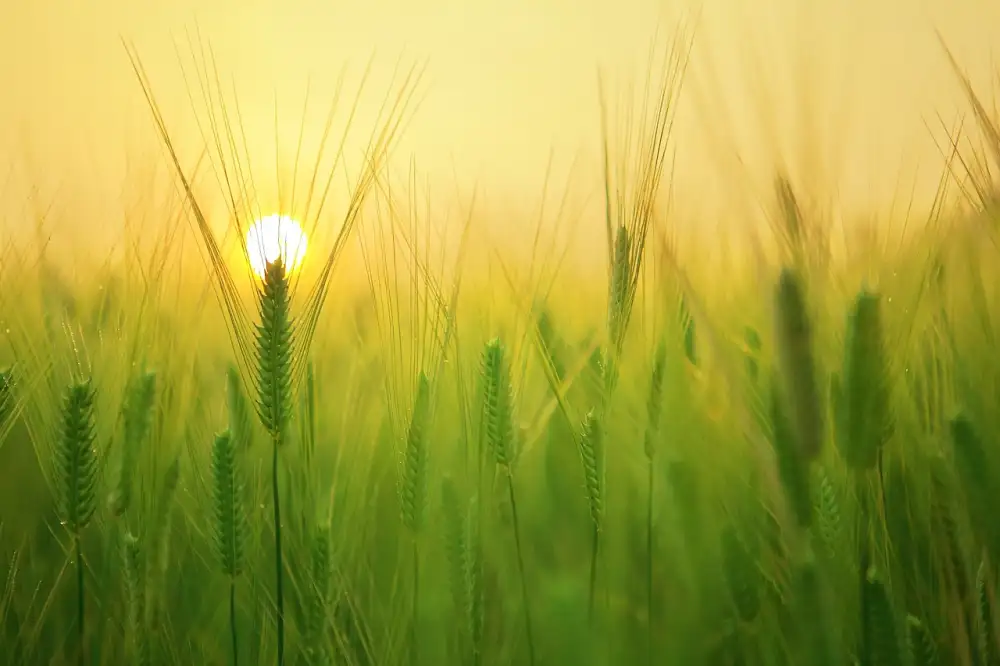The Perfect Time to Harvest Rhubarb: A Guide for Home Gardeners

Rhubarb, with its tart and tangy flavor, is a favorite among many home gardeners. This versatile plant not only adds a unique taste to various dishes but also provides a beautiful addition to any garden. However, knowing the perfect time to harvest rhubarb is crucial in order to enjoy its optimal flavor and texture. In this guide, we will explore the different stages of rhubarb growth and provide valuable tips on when and how to harvest this delightful vegetable. So grab your gardening gloves and let's dive into the world of rhubarb harvesting!
Understanding Rhubarb Growth Cycle
To successfully harvest rhubarb, it is important to understand its growth cycle. Rhubarb is a perennial plant that goes through different stages of growth throughout the year. In early spring, rhubarb emerges from the ground as small shoots. These shoots quickly develop into large, leafy plants.
During this time, the plant focuses on building up energy reserves in its roots and leaves. As the weather warms up, the rhubarb plant begins to produce flower stalks. However, it is important to remove these flower stalks as they can divert energy away from the edible stalks.
After flowering, the rhubarb plant enters its peak growth phase. The leaves become larger and the stalks thicken and become more vibrant in color. This is when the plant is accumulating nutrients and sugars, making it an ideal time for harvesting.
It is worth noting that young rhubarb plants should not be harvested during their first year of growth. This allows them to establish a strong root system and ensures better yields in subsequent years.
By understanding the growth cycle of rhubarb, home gardeners can make informed decisions about when to harvest their crop for optimal flavor and yield.
Signs of Rhubarb Readiness for Harvest
Before you start harvesting your rhubarb, it's important to know when the stalks are ready to be picked. There are a few key signs that indicate rhubarb is ripe and ready for harvest.
Firstly, look at the size of the stalks. Mature rhubarb stalks should be thick and sturdy, typically around 1 inch in diameter. If the stalks are thin and weak, it's best to leave them on the plant to continue growing.
Secondly, check the color of the stalks. Ripe rhubarb will have vibrant and deep red or pinkish-red stalks. Avoid harvesting if the stalks are still green as they haven't fully matured yet.
Another sign of readiness is when the leaves start to unfurl fully. The leaves should be open and spread out, indicating that the plant has reached its maximum growth potential.
Lastly, gently tug on a stalk and see if it easily comes out of the ground. If it resists or feels firmly attached, it means it's not quite ready for harvest. However, if it comes out with a gentle pull, then it's time to start harvesting!
By paying attention to these signs, you can ensure that you're picking your rhubarb at its peak flavor and texture. So keep an eye out for these indicators and get ready to enjoy your freshly harvested rhubarb!
Best Time to Harvest Rhubarb
The best time to harvest rhubarb is when the stalks are thick and firm, usually in late spring or early summer. It's important to wait until the plant has had enough time to establish itself after winter dormancy. Look for stalks that are at least 10-12 inches long and have a deep red or pink color. Avoid harvesting rhubarb too early in the season as the stalks may be thin and not fully developed. Remember, patience is key when it comes to harvesting rhubarb for the best flavor and texture.
Harvesting Rhubarb Stalks
Once you have determined that your rhubarb is ready for harvest, it's time to gather those vibrant stalks. To ensure a successful harvest, it's essential to handle the stalks with care.
Start by grasping the base of the stalk firmly and pulling it away from the plant. Avoid twisting or yanking, as this can damage the plant. Remember, only harvest thick and healthy stalks, leaving the smaller ones to continue growing.
It's important to note that you should never cut off all the stalks from a single plant at once. This can weaken the plant and hinder its future growth. Instead, aim to harvest no more than one-third of the total stalks in a given season.
When harvesting rhubarb, be mindful of any leaves attached to the stalks. These leaves are toxic and should never be consumed. Remove them immediately after harvesting to prevent any accidental ingestion.
By following these guidelines, you can ensure a bountiful harvest of delicious rhubarb stalks while keeping your plants healthy and thriving for future seasons.
Proper Techniques for Cutting Rhubarb
When it comes to harvesting rhubarb, the way you cut the stalks is crucial. Improper cutting can damage the plant and reduce future yields. To ensure a successful harvest, follow these proper techniques:
1. Use a sharp knife or garden shears: A dull blade can crush the stalks, making them susceptible to disease. A sharp tool will make clean cuts, minimizing damage to the plant.
2. Cut at the base of the stalk: Locate the base of the rhubarb stalk where it meets the crown of the plant. Position your knife or shears at this point and make a swift, clean cut.
3. Leave some stalks behind: It's important not to harvest all of the rhubarb stalks at once. Leave at least one-third of the healthy stalks in place so that they can continue to nourish the plant.
4. Remove any flower stems: If you notice any flower stems emerging from your rhubarb plant, remove them immediately. These stems divert energy away from producing edible stalks.
5. Dispose of any damaged or diseased stalks: Inspect each harvested stalk for signs of damage or disease. If you find any, discard them rather than storing them with healthy ones.
By following these proper cutting techniques, you'll ensure a bountiful harvest while maintaining the health and longevity of your rhubarb plants.
Storing Rhubarb After Harvest
Once you have harvested your rhubarb, it's important to store it properly to maintain its freshness and flavor. Here are a few tips for storing rhubarb after harvest:
1. Remove the leaves: Cut off the leaves from the stalks as soon as possible. The leaves contain oxalic acid, which can be toxic if ingested in large quantities.
2. Wash and dry: Rinse the stalks under cold water to remove any dirt or debris. Pat them dry with a clean towel.
3. Trim and cut: Trim off any damaged or discolored parts of the stalks. Cut them into desired lengths, usually around 1-2 inches.
4. Refrigerate: Place the trimmed and cut rhubarb stalks in a plastic bag or an airtight container. Store them in the refrigerator at temperatures between 32-40°F (0-4°C).
5. Use within a week: Rhubarb is best when consumed fresh, so try to use it within a week of harvesting. As time passes, the stalks may become limp and lose their crispness.
By following these storage guidelines, you can enjoy your freshly harvested rhubarb for longer periods and savor its tangy goodness in various culinary creations like pies, jams, or compotes.
Harvesting rhubarb at the right time ensures that you can savor its tart and tangy flavors to the fullest. By understanding the growth cycle, recognizing signs of readiness, and using proper harvesting techniques, you can enjoy a bountiful harvest from your home garden. Whether you use it in pies, jams, or sauces, freshly harvested rhubarb will add a delightful burst of flavor to your culinary creations. So go ahead and indulge in the vibrant taste of this versatile vegetable – it's time to celebrate the joys of rhubarb season!
Published: 10. 12. 2023
Category: Home



